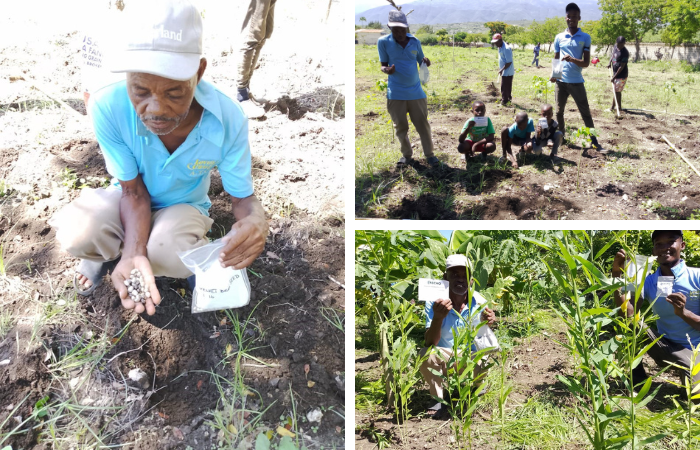Cover crops or “green manure” crops have many benefits for gardens, especially when you are trying to restore poor soil like we have in Haiti. Cover crops are also called “green manure” crops because they act like manure, adding organic matter, nutrients, minerals, and natural fertilizer to the soil, but as a green, growing crop. Selections that we are using in Haiti are Sunn Hemp, Jack beans, velvet beans, lablab beans, and cowpeas. These “crops” are also grown to benefit the soil by protecting it against harsh sun, wind, and rain, in addition to the benefits mentioned above for rebuilding the soil.
Most cover crops also have strong, deep root systems that help break up hard soils like our clay soil in Haiti. Many times, green manure crops are “intercropped” or planted with other plants that benefit from the cover crops. After the green manure crop matures, it is left in place for the organic matter to decay, adding its organic material as fertilizer, improving the soil so it is more viable for the beneficial microbes that make the matter usable by plant roots. The increased organic matter also importantly allows the soil to absorb and retain more rainfall. Other benefits of using dense cover crops are weed control, soil conservation, production of fodder for livestock, adding nitrogen, and some, like cowpeas and mung beans, are edible by humans.
As we incorporate green manure crops into our gardens, Wilner ensures that we also harvest seeds from each species so we can always have a sustainable source of home-grown seeds, so we can continue to use cover crops in the future.
We thank Hope Seeds International for their expansion into providing cover crops and ECHO Global for their research and seed donations. We especially thank you for supporting us to help Haitians learn to help themselves for generations to come through our “development for sustainability” programs.
Rad Hazelip, Assistant Executive Director


